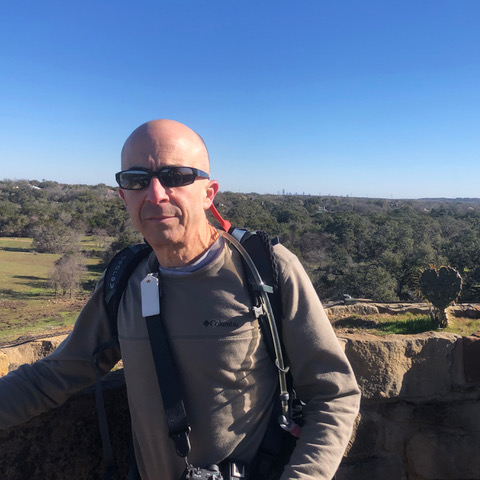
Harold Oster, M.D. is the Chief Medical Officer for The Joseph Project, Inc.
Humans need water to live. In an emergency, securing a safe, clean water supply should be one of your first priorities.
We all know that water is important. Though most people in the United States take access to safe drinking water for granted, as many as 25% of people throughout the world lack access to clean water.[1] In an emergency, loss of a clean water supply is a risk, even in the developed world. Tornadoes, hurricanes, terrorist attacks, and the simple loss of power (if you have a well) can affect your access to potable water. Anyone displaced from their home may struggle with finding drinking water. Fortunately, with knowledge and preparation, you can provide adequate clean water for yourself and your family.
An adult requires about four to six cups of water in a typical day.[2] This total includes liquids from food sources and other beverages. At times of illness, exercise, and exposure to heat, more fluid intake is required, and additional water will be needed for food preparation. When planning for an emergency, expect to need a gallon of water per day per person.
After an emergency, the water supply can become contaminated with toxic chemicals and pathogenic microorganisms, including parasites, bacteria, and viruses. The risk is small, but a nuclear accident or attack could contaminate water with radioactive particles. If you can remain in your home during an emergency, a few days or weeks of stored water will usually be sufficient. Make sure to use containers specifically designed for long-term storage.
If you must leave your home, or if stored water is unavailable or inadequate, you will need to purify water and take it with you when you move. Portable filters are effective in purifying water, and strong, portable storage containers are available. Boiling water can be achieved with portable stoves, and purification drops and tablets are quite effective against dangerous organisms. The Joseph Project offers several options.
Specific methods of decontamination.
- Boiling water: Boiling destroys parasites, bacteria, and viruses. Toxic chemicals and radioactive particles are generally not affected.
- Chemical Disinfection: Chemical disinfection kills most germs, but it may not be quite as effective as boiling in killing parasites such as Giardia.[3] Regular household bleach can be used to disinfect water, and disinfection tablets containing chlorine, iodine, or other chemicals are also available. Chemical and radioactive contaminants are not destroyed by chlorine or other disinfectants. See the Environmental Protection Agency site for details on boiling water and disinfection with household bleach.
- Filtration methods for disinfecting water vary in their ability to remove pathogens.[4] Pitcher filters improve the odor and taste of water but do not remove harmful organisms.
- Microfiltration filters have a pore size of about 0.1 microns and remove parasites such as Giardia, but fail to remove bacteria and viruses. Since bacterial contamination is common, I do not recommend microfiltration in emergencies.
- Ultrafiltration filters have a pore size of about 0.01 microns and remove parasites, bacteria, and some viruses.
- Nanofiltration filters have a pore size of about 0.001 microns and remove parasites, bacteria, and most viruses. Some chemicals and radioactive particles may also be removed.[5]
- Reverse osmosis (RO) is the most effective filtration method, but RO systems are not portable. RO filters have a pore size of 0.0001 microns and remove virtually all microorganisms. RO removes more toxins and chemicals than the other filtration methods, and some radioactive particles may be filtered out.[6]
- Water distillation is a highly effective method for removing microorganisms, most toxins, and many types of radioactive particles from water.[7] [8] Systems capable of purifying large amounts of water in a short time, however, are often impractical and expensive.
During a crisis, access to potable water should be a top priority. Fortunately, simple planning measures can provide you and your loved ones with everything you are likely to need.
Harold Oster grew up in Miami, Florida, graduating college and medical school at the University of Miami. He completed his internship and residency at UCSD Medical Center in San Diego. He then returned to the University of Miami for a fellowship in Infectious Diseases, remaining on faculty as Interim Chief of Infectious Diseases at the VA Medical Center.

In 1999, Harold moved back to San Diego where he worked as a primary care internist at Scripps Clinic. In 2001, he left Scripps to work at UCSD Medical Center, practicing Internal Medicine and Infectious Diseases. In 2004, Harold and his family moved to Minnesota where he worked at Allina Health as an internist and clinic lead physician until retiring from the practice of medicine in 2024.
Harold’s medical interests are diverse, ranging from infectious diseases to diabetes and disease prevention. His passion for health and wellness led him to write a book on weight loss, The Three Rules to Lose Weight and Keep It Off Forever, which he updated with a second edition in 2024. He reviews medical articles for the Natural Health Research Institute and is currently working on another book.
Harold and his wife met in medical school. She has a thriving Ophthalmology practice, and their son is a senior software engineer at Optum Health. In his free time, Harold enjoys hiking, drawing, and playing the piano.
[1] https://www.who.int/news/item/26-08-2025-1-in-4-people-globally-still-lack-access-to-safe-drinking-water—who–unicef
[2] https://www.health.harvard.edu/staying-healthy/how-much-water-should-you-drink
[3] https://www.cdc.gov/water-emergency/about/index.html
[4] https://www.cdc.gov/drinking-water/about/about-home-water-treatment-systems.html
[5] Montaña M, Camacho A, Serrano I, Devesa R, Matia L, Vallés I. Removal of radionuclides in drinking water by membrane treatment using ultrafiltration, reverse osmosis and electrodialysis reversal. J Environ Radioact. 2013 Nov;125:86-92. doi: 10.1016/j.jenvrad.2013.01.010. Epub 2013 Jan 29. PMID: 23369743.
[6] Montaña M, et al.
[7] https://www.fema.gov/pdf/library/f&web.pdf
[8] Ma H, Shen M, Tong Y, Wang X. Radioactive Wastewater Treatment Technologies: A Review. Molecules. 2023 Feb 17;28(4):1935. doi: 10.3390/molecules28041935. PMID: 36838922; PMCID: PMC9965242.
